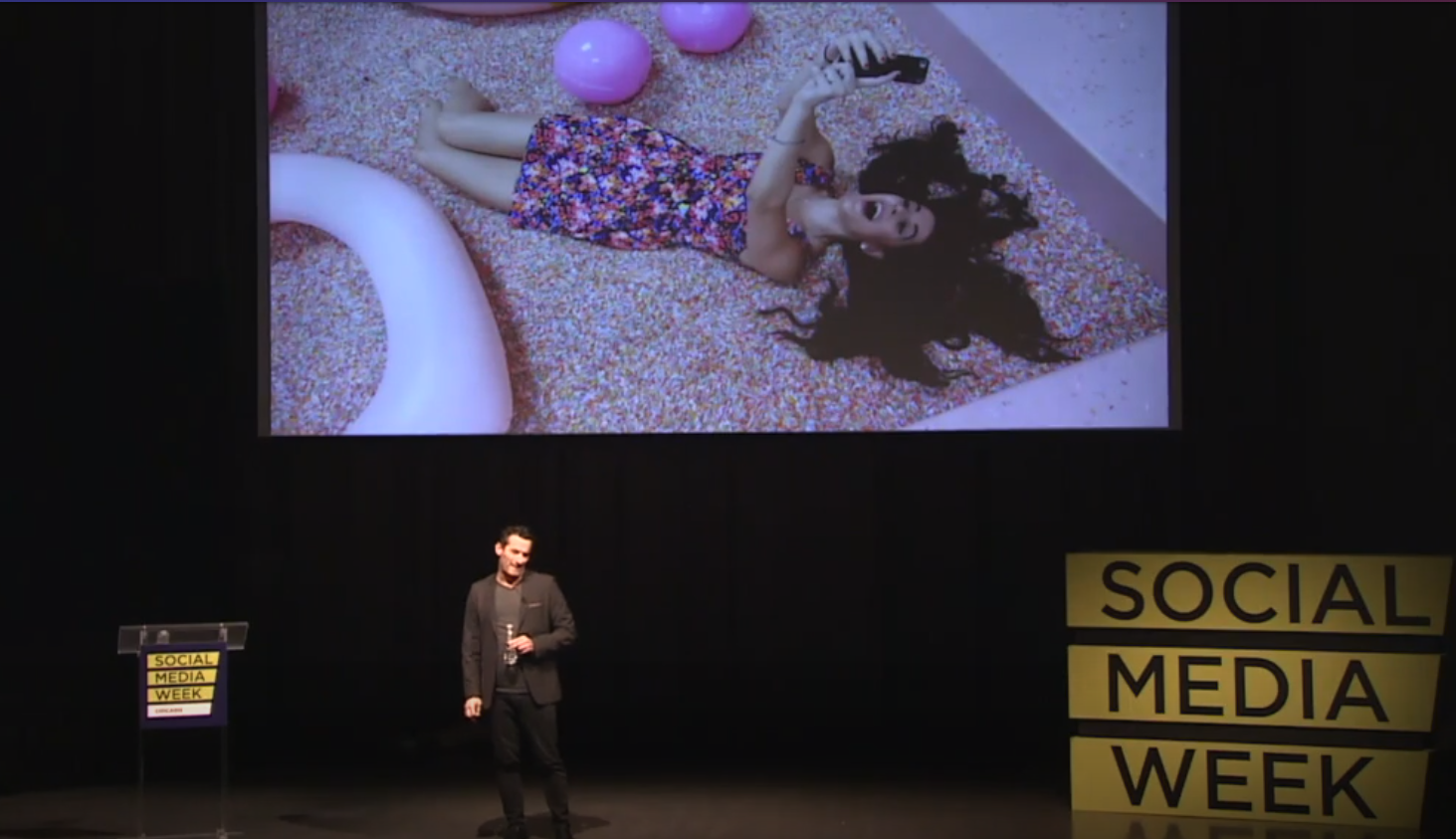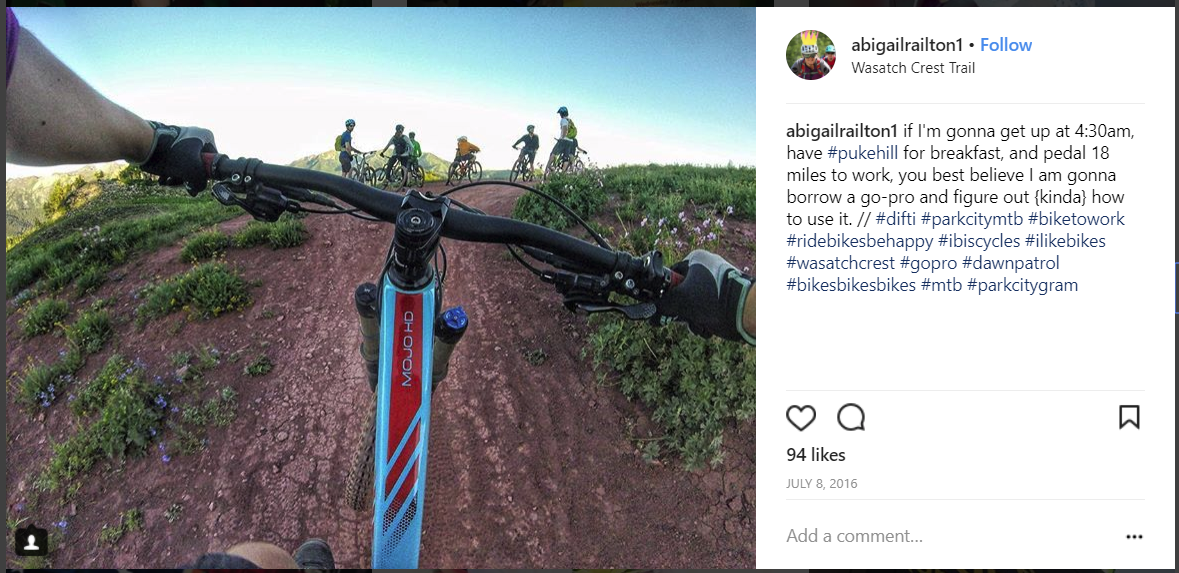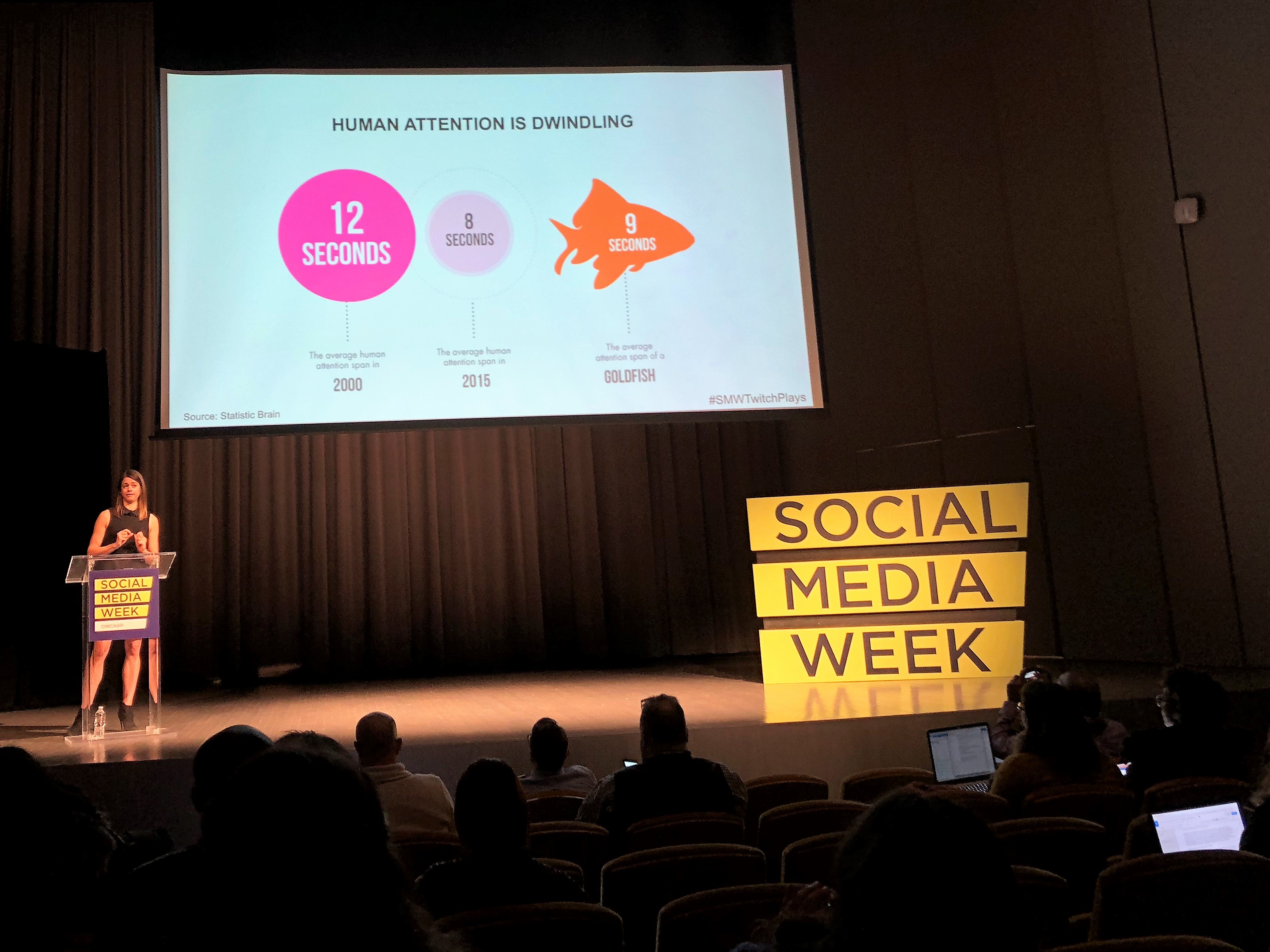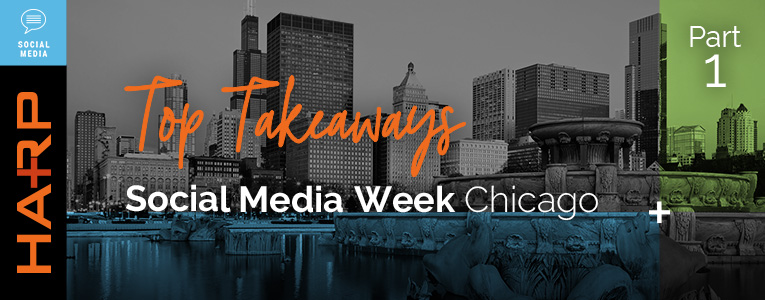Our heads are still reeling, and our laptops are chock-full of facts, figures, tips and tricks we picked up at Social Media Week Chicago 2017 (#SMWChicago). What a whirlwind of insights and personalities! The speakers were knowledgeable, articulate, and yes, even entertaining.
As part one of a three-part series, here are 3 key takeaways for brands and marketing departments from this fast-paced, event-packed and inspirational social media-packed event.
1) The status update. The new status symbol?
Back in the 70’s and way before the advent of social media, status seekers showed their friends and neighbors they had arrived by cruising the streets in the newest Caddy, sporting designer handbags and jewelry and steppin’ out in the cherished Sergio Valente or Jordache designer jeans.
Today, rather than the mass accumulation of stuff as status symbols, people, especially millennials and their younger counterparts, Generation Z (a.k.a. Linksters) are using social media to create the perception they desire for their social status.
Selfies from enviable destinations abound, food porn is a thing, and creating the pooch-adorned snap on the way to anywhere is synonymous with getting in the car.
The advent of social media combined with the pretty-darn good camera-equipped, ubiquitous smart phone has paved the road for the ‘experience posted on social media’ to replace the collection of material things as the new status symbol.
The future of branding is un-branding.

#difti (did it for the Instagram) turns up posts about ‘unboxing’ a just-received subscription box to a brightly-colored Nutella Milkshake to a bike adventure captured on a Go-Pro. People experience brands and post about their experiences.

As Matt Britton (@MattyB) put it so well, “People are now brands, and brands are people.”
Key Takeaway #1
Smart brands will evolve to integrate experiential moments—creating or providing Instagramable opportunities for their audiences.
[Tweet “Smart brands will evolve to integrate experiential moments—creating or providing Instagramable opportunities for their audiences.”]
2) Influencer marketing is BIG. Really, really big.
The Zoellas of the world rule marketing.
Zoella was a teenager when she started blogging as an “extension of herself” and her beauty regimen. Today her YouTube channel has 12 million subscribers, and she has garnered 11.2 million followers on Instagram and Twitter. How did she rise to such fame so fast? Simply by being herself: chatting before the camera about her life and her favorite beauty products in the comfort of her own rented apartment. The more followers she got, the more pre-roll ads she was paid to post (YouTube vloggers make on average $0.001 per view). It wasn’t long before beauty brands started paying her to promote their products in her videos. In 2014, she launched her own product line, followed by another in 2016, when she was featured in Cosmopolitan’s “Millennial Power List.” Recently, Target and Ulta Beauty have started carrying her products.

As impressive as this is, Zoella is about to be passed in followers by YouTube’s six-year-old star Ryan. Forbes ranks his Ryan ToysReview channel on its Top Ten most profitable list.
Influencer marketing is exploding, as more and more businesses turn to social media stars (mommy bloggers, travel bloggers, health care bloggers, trending YouTubers, Instagram influencers and podcasters) for branded content.
These influencers concept and collaborate with companies around a topic or product they can effortlessly discuss and promote to their mass of followers. They’re so valuable because they create authentic conversation around your brand to a hyper-targeted, smitten audience.
Of course, not every business or brand can afford to pay hundreds of thousands of dollars for macro influencer (celebrity-level) campaigns, but it’s not all about macro influencers.
The Case for the Micro Influencer
Micro-influencers (typically defined by a social media following between 1000 and 25,000):
- have a closer, more intimate connection with their audiences,
- have more authentic two-way conversations,
- are trusted by consumers, and
- on average, charge around $250 per post. (A much more palatable price than the macro-influencers who typically charge upwards of $25K per post.)
Because micro-influencers have an even more narrowly focused following, their engagement tends to be even more dynamic than that of the influencers with 100,000+ followers, according to HelloSociety.
So, embrace all that authentic, intimate content out there. Do some thorough research on social media influencers to ensure you’re targeting the one with:
- the perfect content, style and tone to represent your brand, and
- followers with a demand for your product.
You’ll find experts vlogging about money and time management, health and fitness, beauty and fashion, gardening, home repair, and every imaginable topic.
Key Takeaway #2
With millions of influencers building mass niche-targeted followings, businesses and brands can’t afford to ignore the exploding influencer marketing trend. Influencer marketing is powerful and obtainable for most brands. Collaborate with the influencer on the message and creative (vs. giving mandates) for the most authentic, engaging content.
Tip: To find the influencer or micro-influencer that has a following related to your product or service, tools like Tapinfluence, Upfluence, or Julius are invaluable.
[Tweet “Collaborate with brand influencers on the message and creative (vs. giving mandates) for the most authentic, engaging content.”]
3) Create content for the speed of the feed
Eight seconds—that’s the average human attention span today and it’s getting shorter. Not much time to catch someone’s attention. The good news is the human brain is fast. Really fast. It can grasp a visual concept in just 13 milliseconds.

So why are we still inundating people’s social media feeds with long, laborious content?
Coca-Cola’s popular Facebook ads remind people to share in seven seconds. Captain Morgan’s Instagram is a shining example of 2-3 second video clips. Mr. Clean’s two second sweep of the sponge is sure to imprint on viewers’ brains.
It’s a stunning fact that most of us scroll through about 300 feet of content per day on our social media news feeds.
Social media is over-saturated with content; every post you create is competing for viewers’ attention in a vast sea of content.
So the question begs, how do you get you create scroll-stopping content?
By creating content for the way people consume content.
A good guide is to make 70% of your content fast and immediate—snackable content that is easily viewed while waiting for a train or in the grocery check-out line for example.
Aim for about 20% of your content to be interactive for when people have slightly longer periods of time to consume it (riding on a bus or train for example).
- Ask a quick question. (Where would you want to retire—if you could retire?)
- Extract a product preference (salted or unsalted?) or a funny aside (nobody at the club needs to see this donut).
And 10% of your brand’s content should be fully immersive, long-form content—something your followers can watch/read while comfortably lounging on their couch, next to their chips and merlot (a quick lesson on how your body can burn off extra calories, for example).
Key Takeaway #3
- Produce content for the way people consume content.
- Create immediate content and video for the speed of the feed (think 2-8 second videos).
- Create content that’s interactive. This is slightly longer content made for viewer engagement when they have short windows of time.
- Create long form content that’s immersive, for the consumer to get lost in.
[Tweet “Create immediate content and video for the speed of the feed (think 2-8 second videos).”]
Did you attend Social Media Week Chicago 2017? What stands out in your memory as a key takeaway?

